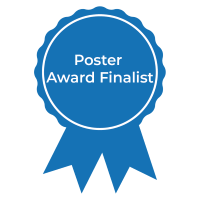Back
Neural Crest, Placodes and Craniofacial Development
Poster: Neural Crest, Placodes and Craniofacial Development
49 - Proteomic Profiling of Uterine Tissue Reveals Molecular Clues to the Protective Effect of thm1 Heterozygous Female Mice Against Cleft Palate in Offspring
Monday, March 25, 2024
10:15am – 12:15pm US EDT
Location: Sheraton Hall
Poster Board Number: 49
There are separate poster presentation times for odd and even posters.
Odd poster #s – first hour
Even poster #s – second hour
Co-authors:
There are separate poster presentation times for odd and even posters.
Odd poster #s – first hour
Even poster #s – second hour
Co-authors:
Jeremy Goering - Univserity of Kansas Medical Center; Sarah Wilson - University of Kansas Medical Center; An tran - University of Kansas Medical Center; Dana Thalman - University of Kansas Medical Center; Michaella Rekowski - University of Kansas Medical Center; Micahel Washburn - University of Kansas Medical Center; Pamela Tran - University of Kansas Medical Center; Irfan Saadi - University of Kansas Medical Center

Brittany M. Hufft-Martinez, PhD
Postdoctoral Fellow
University of Kansas Medical Center
kansas City, Missouri, United States
Presenting Author(s)
Abstract Body : Craniofacial anomalies accompany a third of all birth defects, with cleft palate (CP) alone affecting 1/1200 newborns, either as an isolated phenotype or as part of a syndrome. We have found that autosomal dominant mutations in the cytoskeletal gene, SPECC1L, result in syndromic CP. In mice, mutants for Specc1l gain-of-function alleles show cleft palate, exencephaly and shortened cilia, phenocopying mutants for ciliary Thm1 (Ttc21b) gene. Indeed, double heterozygous embryos for a Specc1l gain-of-function allele and Thm1 null allele, Specc1l∆CCD2/+; Thm1+/-, showed 34% CP compared to just 18% and 0% in Specc1l∆CCD2/+ and Thm1+/- heterozygotes alone – a clear genetic interaction between cytoskeletal Specc1l and ciliary Thm1. Surprisingly, this CP occurrence was observed only when Specc1lDCCD2/+ females were crossed with Thm1+/- males. When parental genotypes were reversed, CP was not observed in offspring of Thm1+/- mothers. Using control crosses, we determined that maternal Thm1+/- heterozygosity was protective against CP in the offspring. We propose that Thm1 heterozygosity leads to changes in maternal uterine tissue that positively influence fetal development. To test this hypothesis, we performed proteomics analysis on uterine tissue, and showed that indeed Thm1+/- mothers have a different protein expression profile. Importantly, the top Gene Ontology categories associated with upregulated proteins were for Placenta Development and Response to Nutrients. A further phospho-proteomic analysis in uterine tissue from Thm1+/- mothers revealed changes in AKT and mTOR pathways that are known to affect both nutrient and placental signaling. The mTOR signaling pathway functions as a nutrient sensor in individual cells and globally in organs. AKT activates mTOR in response to growth factor signaling. To our knowledge, this is the first mouse model of a protective maternal genetic effect against a birth defect. These studies will generate novel insights into the role of maternal environment in the etiology of isolated CP complex disease.


